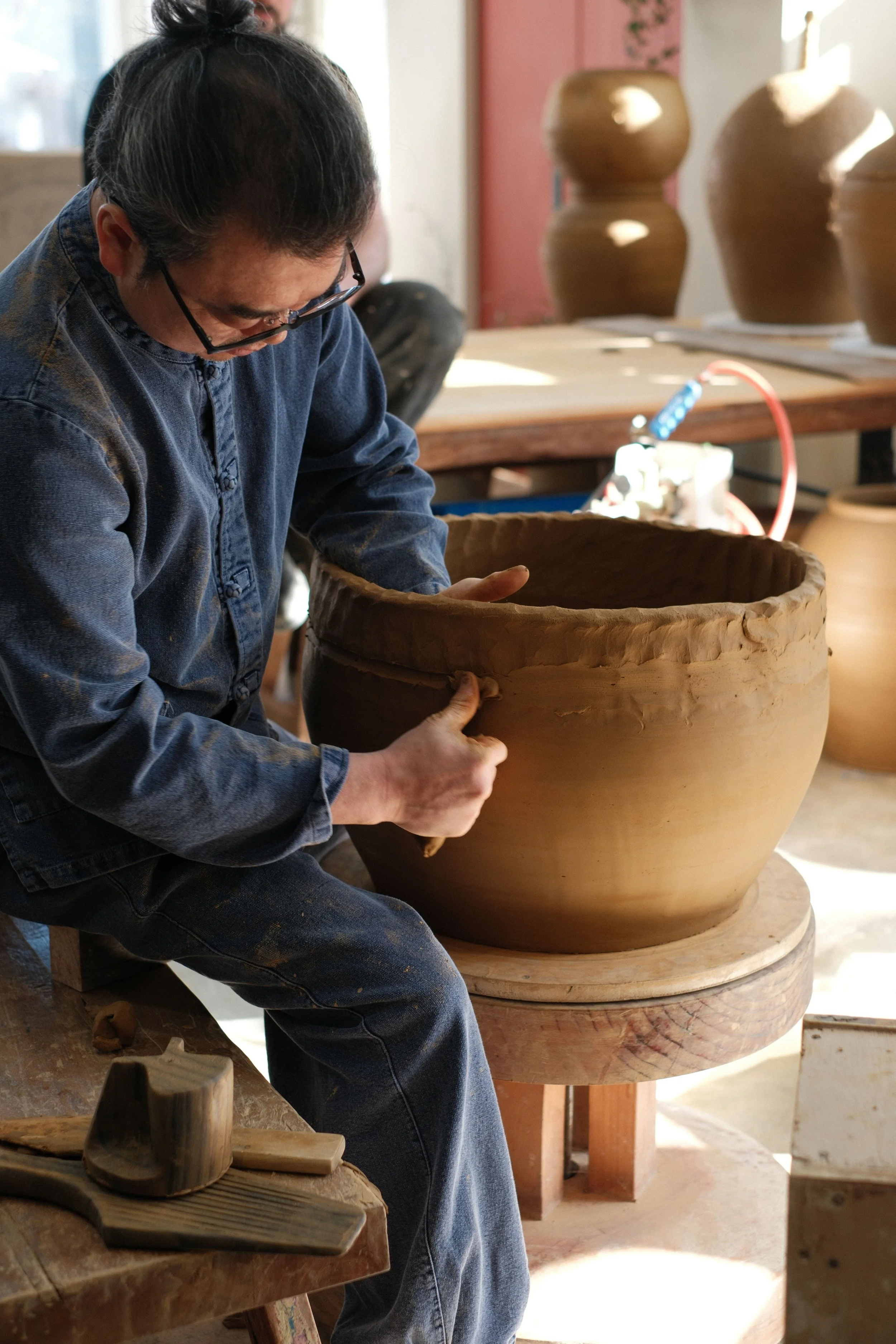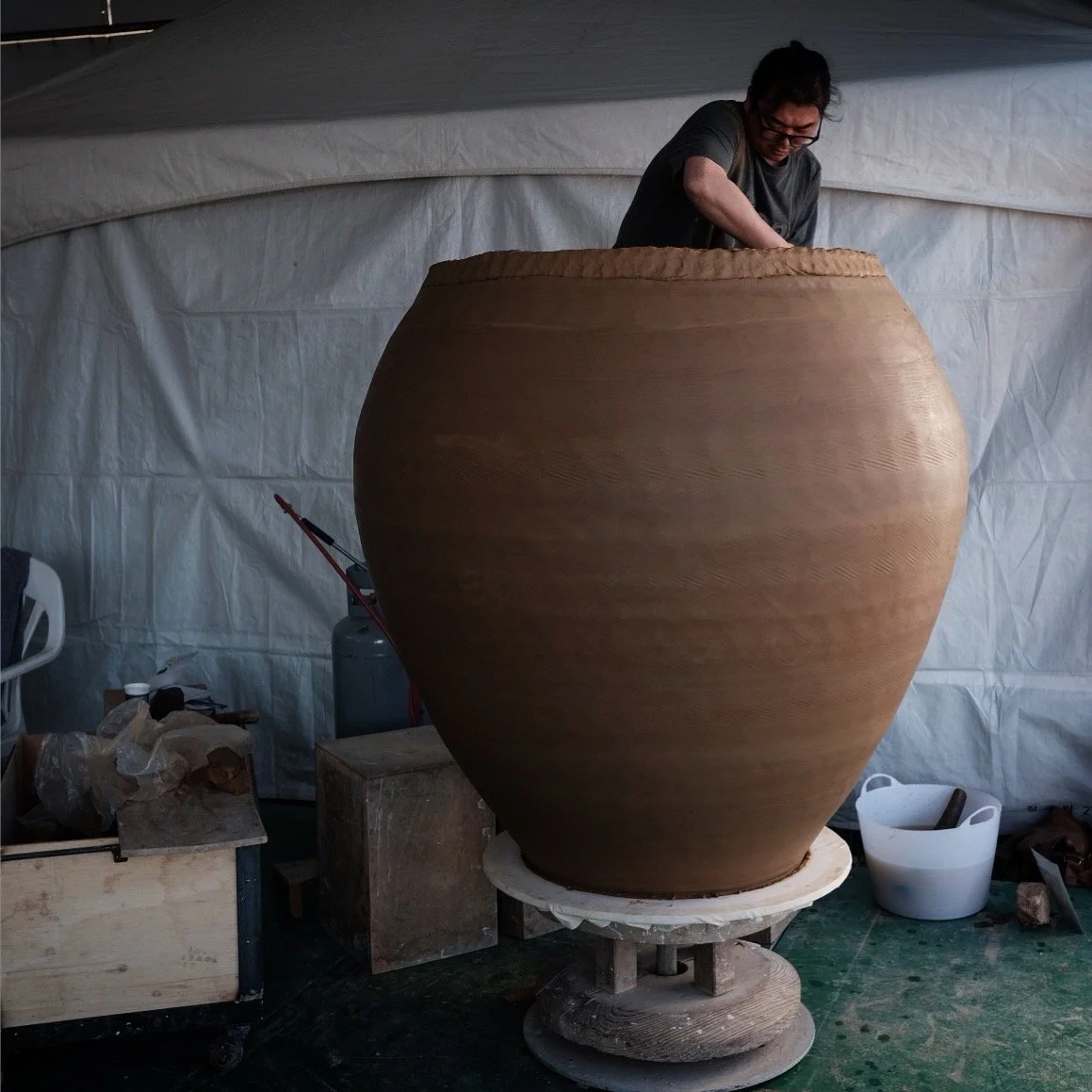4 Day Korean Onggi Masterclass with Kwak Kyungtae
Join us for an intensive 4-day masterclass where Teacher Kwak will share and teach the traditional techniques of Korean Onggi making in a focused and engaging format. Classes will be taught by Teacher Kwak with his two apprentices, providing an excellent teacher to student ratio. Experience a unique and immersive opportunity designed for pottery enthusiasts.
March 8th - March 11th, 2026
*Class will take place in St. Paul, Oregon (Not Heirloom Ceramic Studio)
Teaching hours 10:00 - 13:00, Lunch Break, 14:30 - 17:30
Price : $1895.00
Masterclass Includes:
High-quality stoneware clay
A comprehensive tool set valued at $300 for each student, including 4 wooden tools, 2 metal ribs, and 1 shammy tool
Translation by Teacher Kwak’s apprentice
Basic communal tools (feel free to bring your own)
Snacks, coffee, and tea available throughout the day
*Please Note: Firing service is not included; if you wish to fire your pieces an additional fee will apply based on the size of the items.
An Exclusive Masterclass Led by Teacher Kwak
This masterclass welcomes participants of all skill levels, from beginners to advanced potters. While the core curriculum is accessible to everyone, we provide personalized 1:1 guidance to cater to each individual’s level and aspirations throughout the class.
This course is ideal for those looking to work with clay at a large scale. It also suits those who have experience with handbuilding and wish to acquire new skills, streamline their workflow, or diversify their techniques. Regardless of your experience—whether you have been working with clay for days or decades—you will find the Onggi process to be a rewarding and enriching learning experience that deepens your connection with this versatile medium.
Traditional Onggi techniques have been learnt and used by generations of Korean potters; you will learn the same movements that were being used thousands of years ago to build strong vessels efficiently.
Topics covered:
Regional influences, i.e how geographical limitations influenced subtleties of form and making techniques
Clay sourcing, storage, and preparation for making onggi, historical and contemporary approaches
Practical method to stretch coils (Taryeom) on the table from a block of clay
Making the base disc and compressing it flat with the pang-mang-i (wooden striking tool)
Coiling process (Taryeom-jil), simultaneously attaching the coil and creating height in the wall of the piece in a rhythmic set of micro techniques that become one collective movement
Paddling the form (Surae-jil) using wooden tools inside and outside to compress, thin, and shape the form on the wheel
Final Shaping (Geun-gae-jil) using metal rib tools for smoothing the surface while altering the line of the final form.
Rim forming and refining using a traditional long shammy cloth (Jeon-tae)
Scribing of lines and decorative motifs, historical significance and their role in accentuating form
Lifting the freshly made onggi off the wheel with traditional cloth method
Teacher Kwak’s interpretation of traditional onggi techniques in his artistic practice, along with an invitation to using traditional tools and techniques to inspire new ways of thinking and working
Onggi Tool Set
Onggi Tools (pictured from left to right):
Bang-mang-i (방망이) - wooden club
Su-rae (수레) - flat paddle
Mit-ka-sae (밑가세) - wooden knife
Do-ge (도게) - striking pad
Geun-gae (근게) - 2 metal ribs
Jeon-dae (전대) - shammy cloth



